Date: 25 November 2009
Simon Bennett, the company’s international sales director, says that advanced steel glazing systems can now make even high-risk buildings safe from terrorist attack.**When it comes to terrorism, perception is everything.**In the UK, The Security Service (MI5) says that “the current threat level is assessed as substantial. This means there is a strong possibility of future terrorist attacks and indicates a continuing high level of threat to the UK.”**In the United States, the Department of Homeland Security’s threat assessment is currently Elevated, a condition declared only when there is a significant risk of terrorist attack.**It’s the same around the world. In New Zealand, for example, the NZ Security and Intelligence Service reports that “there are individuals and groups in New Zealand with links to overseas organisations that are committed to acts of terrorism, violence and intimidation.”**But perhaps it’s not all perception. According to the American National Counter-Terrorism Centre (NCTC), there were some 11,800 terrorist attacks against non-combatants during 2008, resulting in over 54,000 deaths, injuries and kidnappings.**As was the case in 2007, most attacks in 2008 were perpetrated by terrorists applying conventional fighting methods such as armed attacks, bombings, and kidnappings. As we’ve seen all too graphically, 2009 hasn’t been any better.**The FBI defines terrorism as "the unlawful use of force or violence against persons or property to intimidate or coerce a government, the civilian population, or any segment thereof, in furtherance of political or social objectives.”***The Encyclopaedia Britannica, more prosaically, defines it as “the systematic use of violence to create a general climate of fear in a population and thereby to bring about a particular political objective.”**However, and perhaps surprisingly, it’s been the glass and glazing industries that have made real progress in dealing with terrorist attack. At Wrightstyle, we recognised some years ago that the main terrorist threat comes not only from the high explosives used in over 70% of terrorist incidents but from flying glass and the failure of systems supporting the glass.**According to a submission to the US House of Representatives sub-committee on public buildings and economic development, “glass is the single greatest source of both building damage and human injury in urban bomb attacks. In urban bomb attacks many people can be fatally injured at great distances from the detonation – people who would have survived uninjured but for falling or flying glass.”**The mechanism of injury from blast injuries has been studied since the Balkan Wars in 1914 and continued during and after World Wars I and II. Overall, blast injuries result in mortality range between 7.8% in the open air to 49% in a confined space.A majority of victims (70%) will sustain soft tissue injury, and traumatic amputations will occur in approximately 11% of cases.**
The issue of glass as a terrorist weapon was pushed to the top of the security agenda by the attack on the Alfred P Murray Federal Building in Oklahoma City in 1995, the first time that a major terrorist attack had taken place on US soil and which gave rise to an unprecedented level of buildings research. In that attack, 167 people died and 750 were injured.***
Most people killed or badly injured in a blast involving high order explosives (HE) are affected by either primary or secondary blast injuries. Primary HE blast injuries are caused by high-pressure gases from the explosion rapidly expanding to produce a supersonic blast wave. This has devastating effects on human air-filled tissue, particularly the lungs and gastrointestinal tract. Primary blast injuries are generally fatal.**
Secondly, HE blast injuries caused by flying objects, for example, glass fragments. Secondary blast injuries are much more common than primary blast injuries and are the most usual causes of death in blast victims. The penetrating injuries occur most often in the exposed areas of the body such as the head, neck, and extremities.**
The Journal of Performance of Constructed Facilities puts it more graphically: “When a terrorist bomb explodes in an urban area, it produces devastating effects, including structural and non-structural damage to buildings, injuries, and deaths. Numerous injuries in explosions result directly and indirectly from window glass failure.**
“Direct glass-related injuries occur when glass shards flying and falling from fractured windows cause lacerations and abrasions. Secondary glass-related injuries occur when the shock front of the blast wave passes into buildings through fenestrations vacated by fractured glazing.”***
Research from Oklahoma and elsewhere concluded more than one-quarter of glass-related injury victims in buildings occur within 1.5 metres of a wall with glazed windows and nearly one-half of glass-related injury victims are positioned within 3.0 metres of a wall with glazed windows.**
Oklahoma focused the attention of the engineering and security communities on two major issues: the prevention of progressive structural collapse (once again a prime focus following 9/11) and the design of blast-resistant glazing. This led the Commission on Engineering & Technical Systems to set up a Blast Mitigation Program to develop methods to protect people inside buildings from terrorist bomb attacks. **
The Commission noted that: “the focus is on protecting people, not the building or other assets. Two key issues in the program are the primary cause of injuries and death in terrorist bombings; structural collapse, and flying debris, for example, glass.”***
The day after the Oklahoma bombing, the US President instructed the Department of Justice to see what conclusions could be drawn in terms of protecting federal buildings. One of the DOJ’s key findings was “to provide for [the] application of shatter-resistant material to protect personnel and citizens from the hazards of flying glass.”**
This indictment on glass was echoed by the conclusions of the Applied Research Association Inc. “Historically, the major contributor to injuries due to terrorist explosion in urban environments is the glass fragment hazard generated by breakage of windows.” ****
The scale of glass injury can’t be overstated. At Oklahoma, for example, glass fragments were found six miles from the detonation. In New York on 9/11, 15,500 windows were damaged within a mile of Ground Zero – nearly 9,000 within half that distance.***
In the wake of the Oklahoma outrage, researchers from the Glass Research and Testing Laboratory at Texas Tech University reached a significant conclusion. They found that damage to property and person could have been reduced if laminated glass had been used in the buildings that surrounded the Federal building. An obvious conclusion, perhaps, but one that began to concentrate minds and encourage focus on the importance of enhanced glass and framing systems.***
A report written for the US National Academy of Engineering also helped to change official views. It said that “a more proactive approach is to develop glazing materials that meet aesthetic and functional design objectives but do not contribute to the explosion-induced projectile hazard.”****
That report, among many others, made clear that terrorist activity might not be a transient phenomenon after all and had to be planned for at the design stage of a new building, particularly for sensitive commercial or military installations, and that it was up to the glass and glazing industries to come up with technical solutions.**
As the security, architectural and glass industries began to fully wake up to the enormity of Oklahoma, and of other attacks on western interests in the Middle East, the world suddenly changed. ***
Perhaps the world should have seen it coming. In a submission to a US Senate Committee on Intelligence, Louis J. Freeh, director of the FBI, said that: “loosely affiliated extremists, motivated by political or religious beliefs, may pose the most urgent threat to the United States. Within this category, Sunni Islamic extremists, such as Osama bin Laden and individuals affiliated with his Al-Qaeda organization, have demonstrated a willingness and capability to carry out attacks resulting in large-scale casualties.”**
His words, prescient and concise were spoken in May 2001, four months before Osama bin Laden proved him right. After those attacks, a clear consensus immediately emerged among urban planners, architects and, not least, the glass and glazing industry. Ways to mitigate against blast hazards posed by terrorism had to be found, and quickly.**
The initial knee-jerk response, to design high-risk buildings with smaller windows, was quietly kicked into the long grass. Nobody wants to work in a bunker, architects didn’t want their designs to be compromised, and planners and politicians didn’t want to feel that terrorism – in design terms – was dictating what cityscapes should look like. The architectural and aesthetic imperative was to find new ways that would allow buildings to continue to make full use of structural glazing and curtain walling.***
My company, Wrightstyle, was in a unique position because, as a total systems supplier, our business lies in developing and testing entire systems for compatibility – whether that be an internal partition or a large expanse of roof glazing or curtain walling. Too often, on paper, a system will appear to offer blast protection. However, put that glass type into an incompatible framing system and, while the laminate glass may remain in one piece, it may also be blown in its entirety from its frame – causing the very primary and secondary injuries that it was designed to protect against.**
We were therefore able to take a more holistic approach, designing and rigorously testing our ideas, marrying glass types to framing systems and finding innovative ways to reduce profile widths. The objective of our research journey, which spanned some six years, was to design a blast-resistant system that didn’t look like a blast-resistant system.**
That journey took us to a specialist test site inside an RAF base in the north of England, where we blast tested our specialist multi-pane curtain walling system. Our view is that, unless you try to test a glazing system to destruction, you have no empirical data on which to base your safety conclusions. **
The first independent test simulated what would happen to our glazing system if a lorry packed with 500 kg of TNT-equivalent explosive was detonated nearby. Our integrated system not only passed the test, remaining intact within its frame, but then passed a second test when we moved the seat of the explosion closer to the glass and simulated a car bomb attack. It might have been a smaller explosion but, being closer to the test rig, it generated a more intense shock wave.**
The twin test was significant for two reasons. First, nobody – as far as we know – has ever tested against a lorry bomb attack followed quickly by a car bomb attack. It’s a test scenario that in normal circumstances is uncalled for. You would normally need only to test for protection against one or the other, not both - and certainly not both in quick succession. However, in light of recent attacks, it is widely accepted that terror groups do not operate according to ‘normal circumstances’ and levels of protection should exceed the expected risk.**
Second, most tests of this kind use only a single module of glass. Ours was a multi-panel large span assembly with a slim 60mm profile width. That means that our blast-resistant assembly will be indistinguishable from a non-blast rated assembly – meaning that a span of our high-security curtain walling will look no different from any other system.**
In terms of safety and aesthetics, it’s therefore a significant step forwards. We are confident that we can now protect the inhabitants of buildings against terrorist attack, yet not give the bad guys the satisfaction of having the building look like a reinforced bunker. Architects can once again use their full imaginations to design stunning buildings.**
It may be a small victory but it does mean that we have taken glass from the terrorist’s arsenal. With that threat removed, the glass and glazing industry has made a very real contribution to combating terrorism.**
A sound video of the blast tests can be viewed at http://www.wrightstyle.co.uk/wba/pages/blast-test.php
Ends***
For further technical information, contact:
Lee Coates
+44 (0) 1380 722 239
lee.coates@wrightstyle.co.uk
www.wrightstyle.co.uk



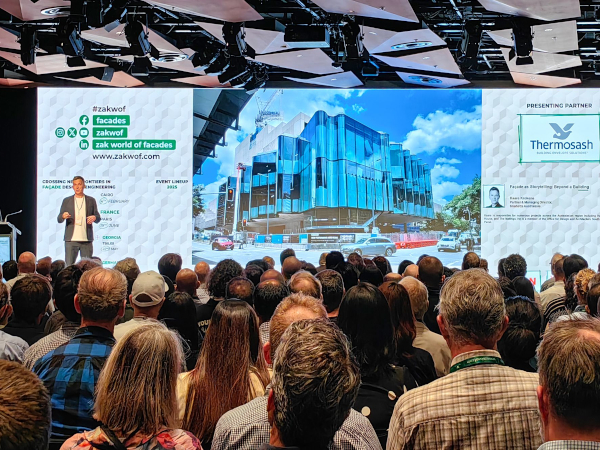
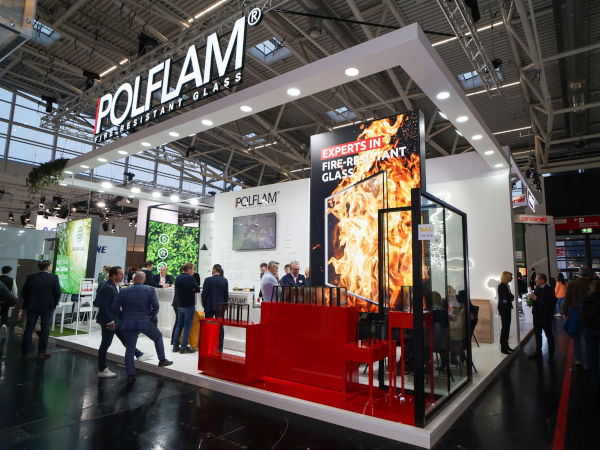






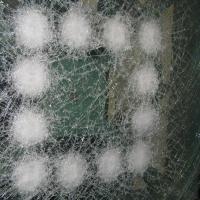
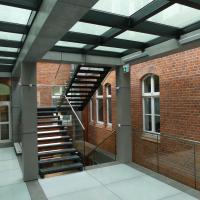
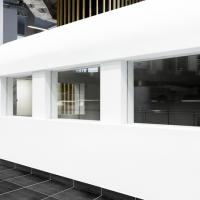


Add new comment